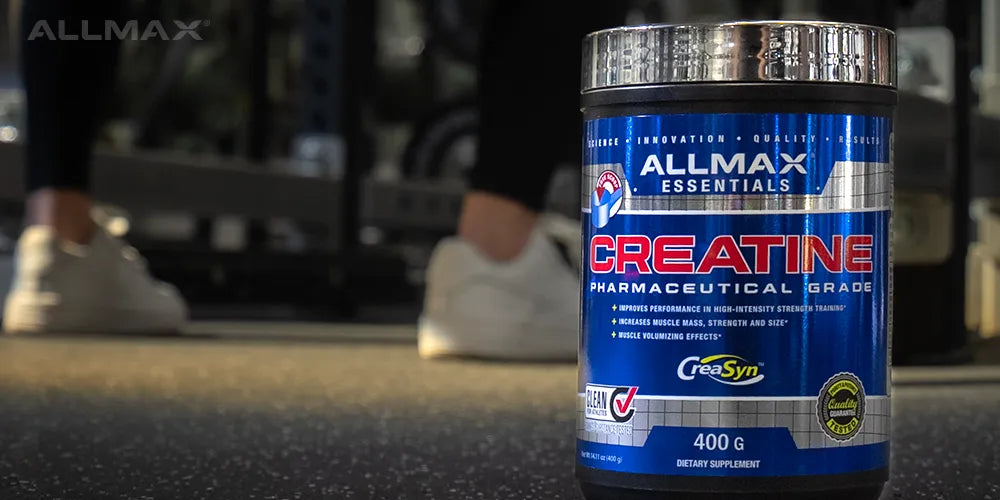As is the case for bodybuilders with 15% plus body fat levels, leaner lifters (those between with naturally lower body fat – often called “hard gainers”) are advised to adopt smart bulking practices in much the same way as there heavier counterparts. These athletes will also need to achieve a caloric surplus from key muscle building foods, though they may need to increase their nutrient intake even further to elevate their body fat levels to a more liberal target range of 12-15% in order to experience lean muscle gains.
Training for the Hard Gainer
Since the naturally leaner bodybuilding athlete may have a faster metabolism and possess an ectomorph body type, training during a bulking phase must be centered on mass building resistance movements and minimal cardiovascular work. A perfect time to prioritize weak point development, the off-season can, for less muscled bodybuilders, be used to target under developed areas with a combination of isolation movements and compound lifts.
FOR FASTER RESPONDING AND STRONGER MUSCLE GROUPINGS IT’S BEST TO STICK WITH HEAVY MASS BODYBUILDERS.
Depending on the musculature of the individual in question, this may be the time to try and build strength rapidly, with low volume, high weight, training sessions, followed by significant periods of rest. Lower volume workouts (with higher weight) will minimize muscle loss, while promoting rapid increases in strength. The caveat to this is that you must be absolutely sure that your nutrition is spot on or you will not see increases in size or strength. Remember – as a bodybuilder you have to eat to grow. During these times more rest and recovery is required, this will be when most of our muscle gains will occur. This applies equally for both our larger and leaner lifters. Cardiovascular training must therefore be reduced to 3-4 shorter sessions (20-30 minutes) per week during a bulking phase.
Nutrition

Leaner bodybuilder’s nutritional requirements are almost identical to those with a higher body fat percentage – plenty of nutrient-dense foods from a wide range of food groups, and the occasional cheat meal. It is however advised that our leaner lifter boost their caloric intake by 500 calories per day above maintenance level for 3-4 weeks. Should body fat be maintained at 12-15%, yet no further muscle gains are forthcoming, boost this daily addition to 1000 calories or more.
MONITOR YOUR BODY FAT LEVELS CLOSELY TO ENSURE YOUR FAT TO MUSCLE RATIO IS OPTIMAL – MUSCLE IS STEADILY GAINED WHILE BODY FAT DOES NOT EXCEED 15%.
Leaner bodybuilders may find it difficult to pack on weight (muscle or fat) due to the effort required to ‘stomach’ 5000 or more calories per day. Their digestive system may find processing such a caloric intake a full time job in itself. For such athletes, specifically designed mass building shakes are essential. Rapidly consumed, and easily processed, highly nutritious shakes comprised of at least 40g of protein and an additional 30-40g of carbohydrates with a good dose of healthy fat (with added fruit and whatever else may boost caloric intake – nuts, seeds, vegetables) may comprise 1-2 of their recommended five or six daily off-season meals.
Bulking the Right Way
It’s important to remember that while body fat is easily gained, muscle is not. By over eating junk foods and reducing cardio our bodies may accumulate excessive levels of fat. Not only will this curtail our gains, but the fat we’ve added will need to be removed come cutting time. Dropping 10-15% of our total weight in fat may require excessive cardio and essential nutrient depletion, practices which, in turn, are likely to promote muscle degradation… and then we’re effectively back to square one. So, to become larger in the off-season without diminishing your chances of success, follow these rules:
- Maintain a caloric surplus – Though body fat levels may peak at 15% this is by no means excessive for the hard training lifter. Ensure calories are kept high enough to sustain heavy workouts and support muscle growth.
- Lift hard and heavy – Use those extra calories to train harder than ever.
- Follow a reduced cardio training schedule – Do not eliminate cardio altogether, it’s essential for general health and managing body fat levels, simply reduce frequency and up intensity for shorter durations.
- Focus on becoming stronger – A stronger muscle will ultimately become a larger muscle. Prioritize strength gains when bulking.
- Keep protein levels high – A minimum of 1.5 g of protein per pound of lean body mass (not total body mass) per day must be achieved.
- Consume high calorie, nutritious foods – Limit cheat meals and junk foods to 2 – 3 times per week.
- Use protein and mass gaining shakes as necessary – These are the ultimate in convenience in today’s fast paced lifestyle and help ensure you don’t miss a meal.
- Constantly monitor your fat to muscle ratio – If needed, adjust your nutrition or training to ensure gradual muscle gains and a steady 12-15% body fat range.
Note: Bulking for Women
All of the practices discussed here are equally effective for both male and female bodybuilders, with one exception: a desirable offseason body fat range for women is between 20-25%. Therefore, women must avoid dropping to the 12-15% males are advised to maintain.



